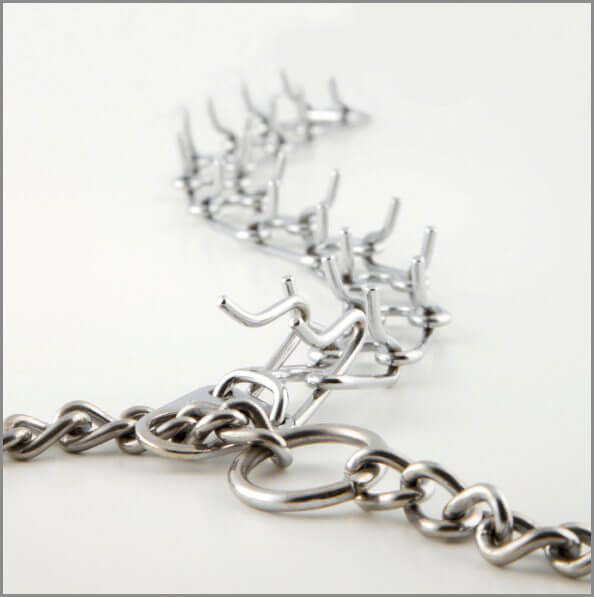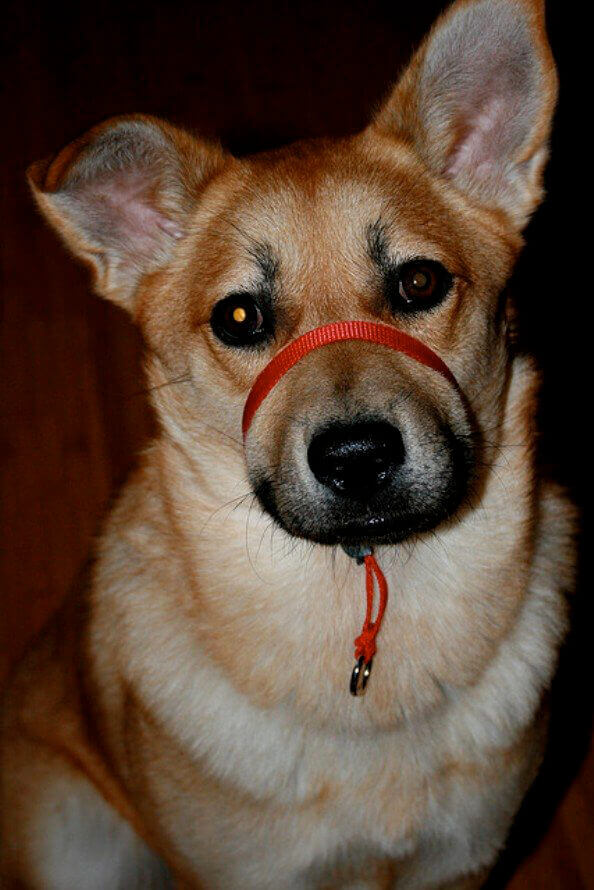Hey, Stop Choking That Dog!
If we saw someone choking, shocking, or dragging a dog, we would intervene, right? But chances are, we have—and we didn’t.
It can be intimidating to tell another dog guardian that he or she is being cruel, but people who rely on choke, prong, or shock collars to control their dogs need to know about the harm that they’re inflicting. Dogs who are made to wear these collars experience a fear of pain that often results in psychological stress, anxiety, and displaced aggression. And the potential physical injuries are just as serious.
Choke and prong collars can cause dogs to suffer from spinal cord injuries, including intervertebral disc protrusion or paralysis as well as nerve damage, a crushed trachea or larynx, and bruising and damage to the esophagus and the skin and tissue in the neck.

Depending on the size of the dog, how hard the dog pulls, and how forcefully the person holding the leash yanks, prong collars can cause serious injuries.
iStockphoto.com/cringuette
Shock collars can cause burns, cardiac fibrillation, and changes in heart and respiratory rates, as well as behavior problems.
“Gentle Leader” or “Halti” head halters aren’t ideal, either, because they wrap around the dog’s muzzle, which most dogs find uncomfortable—it reminds them of the feeling that they get when another dog bites down on their muzzle in a warning gesture. And when the dog tries to pull, the halter pulls the dog’s head downward and to the side, which could potentially cause a neck injury if the dog is pulling hard or moving quickly. A better “no-pull” alternative is the Sense-ation harness, which has a ring located at the dog’s chest, not the neck, for attaching the leash, allowing you to redirect your dog back toward you when he or she pulls or lunges without causing pain.

mamamusings|cc by 2.0
We each have a responsibility to explain as diplomatically as possible to dog owners that positive, reward-based training methods are kinder and more effective than painful choke or shock collars and that having dogs wear harnesses while out walking is much easier on their necks than using any kind of collar.
Dogs are safest and most comfortable wearing a nylon harness when outside.
© PETA
We can use ourselves and our dogs as examples. I show people my dog’s harness and I explain to them that I trained my dog by giving her praise and treats when she walked calmly on the leash and withheld them when she did the opposite, and she soon figured out that good behavior has its rewards. I also planted my feet and refused to move forward as long as she was pulling, and that sent a very clear message that she understood in record time. Now when I walk her, she does really well, and I’m so proud of her.
No dog deserves to be choked, shocked, and dragged. Let’s make sure dogs are treated better than that.

